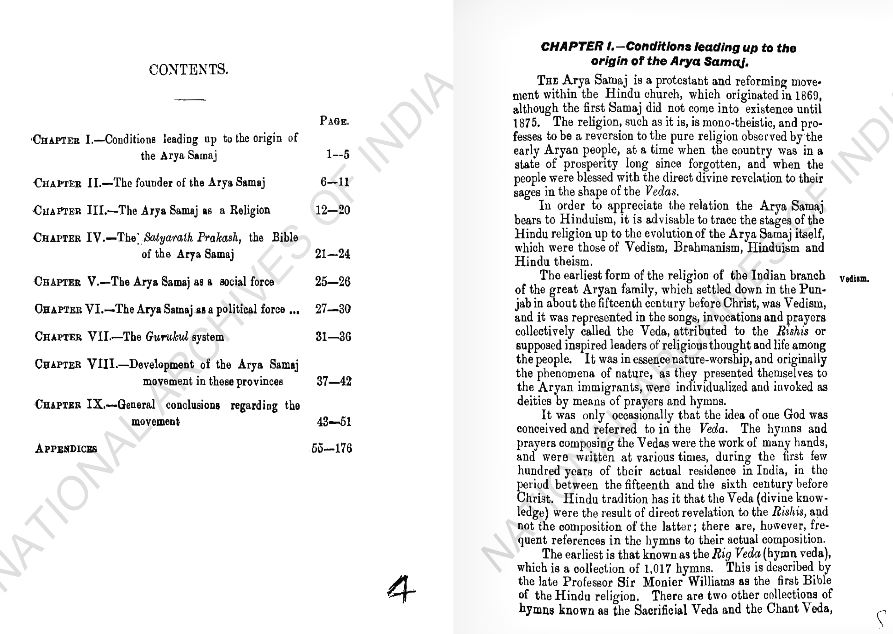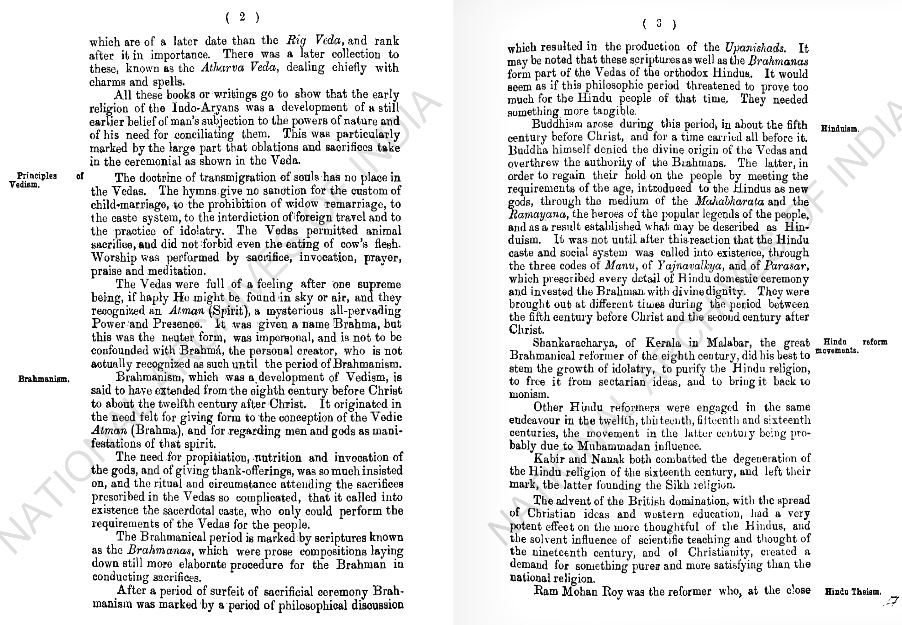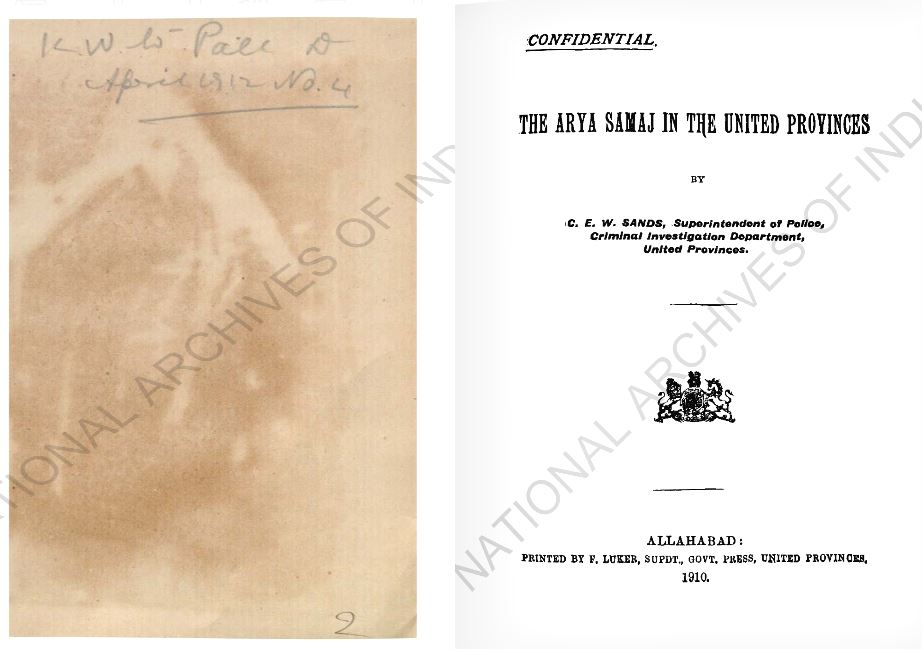from
NATIONAL ARCHIVES OF INDIA
“The hymns and prayers composing the Vedas were the work of many hands, and were written at various times, during the first few hundred years of their actual residence in India, in the period between the fifteenth and the sixth century before Christ, Hindu tradition has it that the Veda (divine knowledge) were the result of direct revelation to the Rishis, and not the composition of the latter.”
The Arya Samraj in the United Provinces, 1910

The earliest form of the religion of the Indian branch Vedism of the great Aryan family, which settled down in the Punjab in about the fifteenth century before Christ, was Vedism, and it was represented in the songs, invocations and prayers collectively called the Veda, attributed to the Rishis or supposed inspired leaders of religious thought and life among the people. It was in essence nature-worship, and originally the phenomena of nature, as they presented themselves to the Aryan immigrants, were individualized and invoked as deities by means of prayers and hymns.
It was only occasionally that the idea of one God was conceived and referred to in the Veda. The hymns and prayers composing the Vedas were the work of many hands, and were written at various times, during the first few hundred years of their actual residence in India, in the period between the fifteenth and the sixth century before Christ, Hindu tradition has it that the Veda (divine knowledge) were the result of direct revelation to the Rishis, and not the composition of the latter ; there are, however, frequent references in the hymns to their actual composition.
The earliest is that known as the Rig Veda (hymn Veda), which is a collection of 1,017 hymns. This is described by the late Professor Sir Monier Williams as the first Bible of the Hindu religion. There are two other collections of hymns known as the Sacrificial Veda and the Chant Veda, which are of a later date than the Rig Veda, and rank after it in importance. There was a later collection to these, known as the Atharva Veda, dealing chiefly with charms and spells.

All these books or writings go to show that the early religion of the Indo-Aryans was a development of a still earlier belief of man’s subjection to the powers of nature and of his need for conciliating them. This was particularly marked by the large part that oblations and sacrifices take in the ceremonial as shown in the Veda.
The doctrine of transmigration of souls has no place in the Vedas. The hymns give no sanction for the custom of child-marriage, to the prohibition of widow remarriage, to the caste system, to the interdiction of foreign travel and to the practice of idolatry. The Vedas permitted animal sacrifice, and did not forbid even the eating of cow’s flesh. Worship was performed by – sacrifice, invocation, prayer, praise and meditation.
The Vedas were full of a feeling after one supreme being, if haply He might be found in sky or air, and they recognized an Atman (Spirit), a mysterious all-pervading Power and Presence. It was given a name Brahma, but this was the neuter form, was impersonal, and is not to be confounded with Brahma, the personal creator, who is not actually recognized as such until the period of Brahmanism.
Brahmanism, which was a development of Vedism, is said to have extended from the eighth century before Christ to about the twelfth century after Christ. It originated in the need felt for giving form to the conception of the Vedic Atman (Brahma), and for regarding men and gods as manifestations of that spirit.
The need for propitiation, nutrition and invocation of the gods, and of givin g thank-offerings, was so much insisted on, and the ritual and circumstance attending the sacrifices prescribed in the Vedas so complicated, that it called into existence the sacerdotal caste, who only could perform the requirements of the Vedas for the people. The Brahmanical period is marked by scriptures knownas the Brahmanas, which were prose compositions laying down still more elaborate procedure for the Brahman in conducting sacrifices.
After a period of surfeit of sacrificial ceremony Brahmanism was marked by a period of philosophical discussion which resulted in the production of the Upanishads.
continue reading
NATIONAL ARCHIVES OF INDIA
